Intense Side Stretch Pose | Parsvottanasana
From Sanskrit to English
Sanskrit pronunciation: Parsvottanasana (parsh-voh-tahn-AHS-anna)
Meaning: parsva = side; ut = intense ; tan = to stretch out.
Benefits of Parsvottanasana
Yoga for every BODY
To fully enjoy the benefits of Parsvottanasana, it is key to spend time building a solid foundation. Maintaining square hips with both legs extended and a long, straight spine can be challenging. It requires strength, flexibility and balance. All the modifications below were thought out to help us master a correct alignment before going for the full pose. That way, we can add a deeper forward fold and revolved prayer without compromising our safety.
Standard Parsvottanasana
1. From Tadasana step or jump open to the right with your arms open to the side, palms facing down. Your heels should be aligned with the respective hip, one leg-distance apart or less. Both legs are extended with your front foot parallel to the longer edge of the mat and your back toes turned in to form a 30 to 45 degree angle with the shorter edge of your mat.
Modification 1: Using a chair
Keeping your feet on separate parallel lanes will help you straighten your legs and square your hips. Using the chair as support for your arms, will enable you to find length in your spine and allow you to keep your shoulders broad and chest open.
A
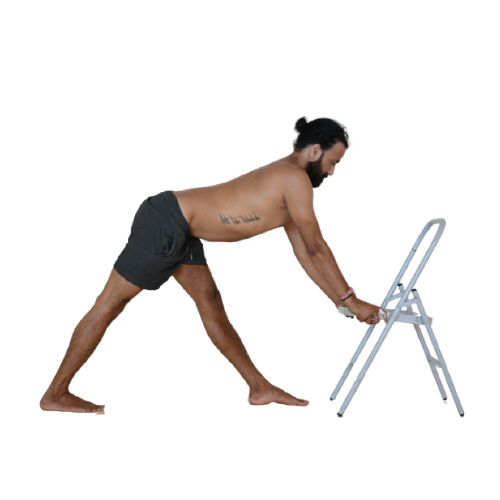
B
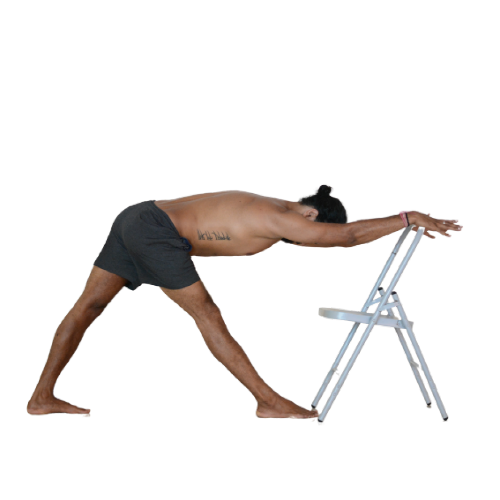
1. Set up a chair at the top of your mat and stand in Tadasana, opposite the chair and towards the end of your mat.
Modification 2: Using Blocks
The next stage would be to lower the height, using two blocks instead of a chair. The blocks will still give you enough support to facilitate the opening in your shoulders and chest. If you notice a misalignment in your hips and spine, try lifting your back heel and placing it against a wall (see picture C).
C
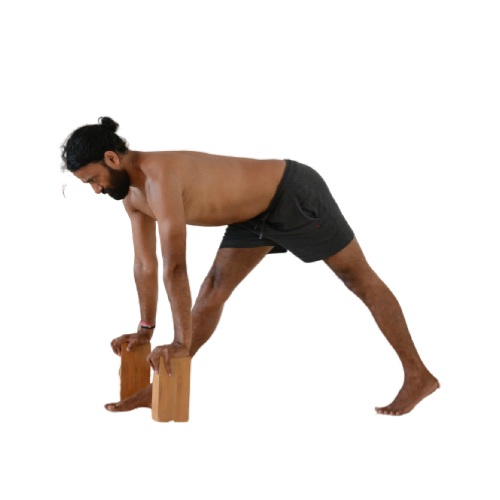
D
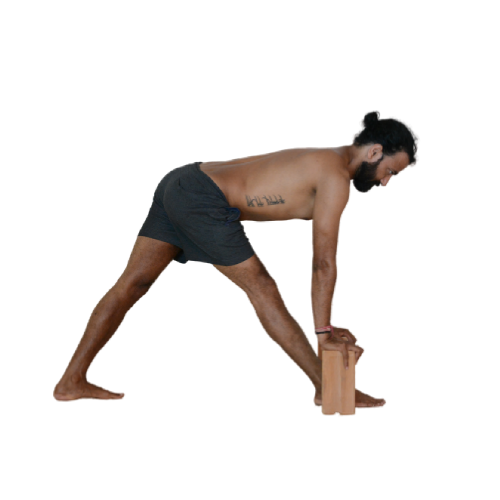
Modification 3: No Props
If the chair and blocks feel too high by now, you can try reaching out for the floor with your fingertips or even flatten your palms entirely onto the ground. That said, please make sure you are not losing the alignment in your hips and spine!
E
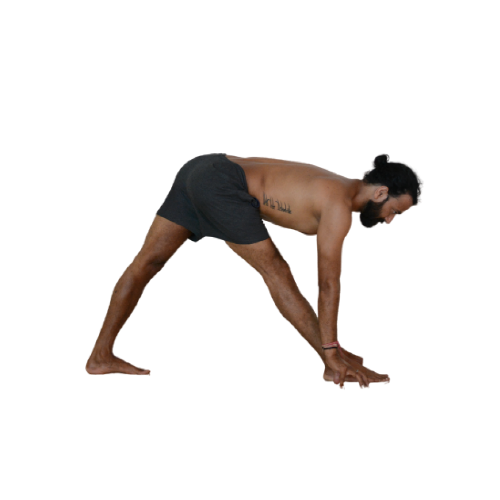
F
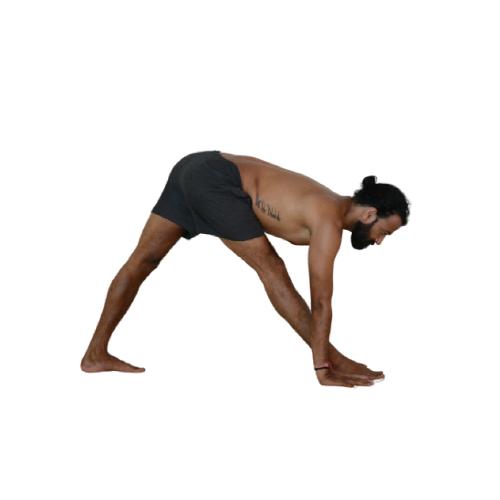
1. From Tadasana step or jump open to the right with your arms open to the side, palms facing down. Your heels should be aligned with the respective hip, one leg-distance apart or less – yet both legs should be extended, your front foot parallel to the longer edge of the mat and your back toes turned in to form a 30 to 45 degree angle with the shorter edge of your mat.
Modification 4: Pushing the hips back
Keeping the hips in place is one of the most challenging aspects of Parsvottanasana. If you don’t have props available, use your hands to gently press the femur back and better perform the action of bending at the hip joint.
G
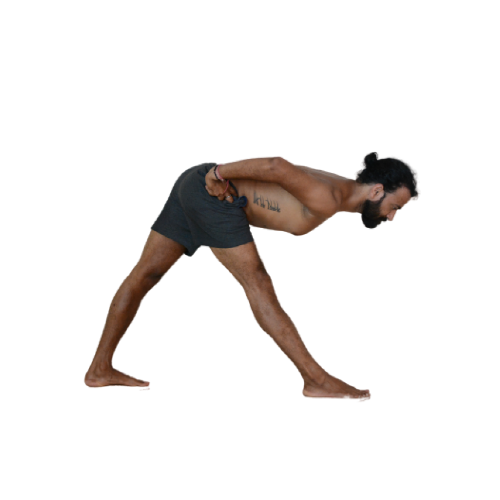
1. From Tadasana step or jump open to the right with your arms open to the side, palms facing down. Your heels should be aligned with the respective hip, one leg-distance apart or less – yet both legs should be extended, your front foot parallel to the longer edge of the mat and your back toes turned in to form a 30 to 45 degree angle with the shorter edge of your mat.
2. Rotate your upper body towards the front and square your hips. Your torso and hips should be parallel to the shorter edge of your mat. Place your hands at the level of your hip creases.
3. Inhale, root through your feet, engage your legs, activate your bandhas, lengthen your spine along with the sides of your torso, and lift your chest.
4. Exhale, fold forward with a straight spine until your upper body is parallel to the ground, and keep pushing your hips back gently with your hands. Look ahead.
Modification 5: Using a strap and a block
Looping a strap around your hip crease also helps maintain a correct alignment of the hips since it pushes the femur bone back into its socket. Holding a block between the hands can enable you to activate your palms and therefore will help you open your shoulders and chest. If this doesn’t feel right, you can grab the opposite elbow (see picture I).
H
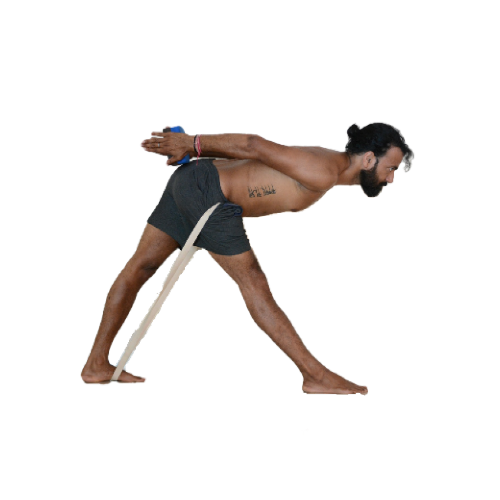
1. Stand in Tadasana with a block and strap close by.
6. Grab your block and hold onto its shorter edge with your palms, behind your back.
Inhale, root through your feet, engage your legs, activate your bandhas, press into the block, lengthen your spine along with the sides of your torso, and lift your chest.
Modification 6: Grabbing the elbows
This modification is closer to the full version of Parsvottanasana, but bear in mind that it may be more accessible than the previous modification. If you notice your shoulders closing when attempting to revolve your prayer and / or fold forward fully, a good solution for you may be to grab your opposite elbow and / or keep the upper body parallel to the floor.
I
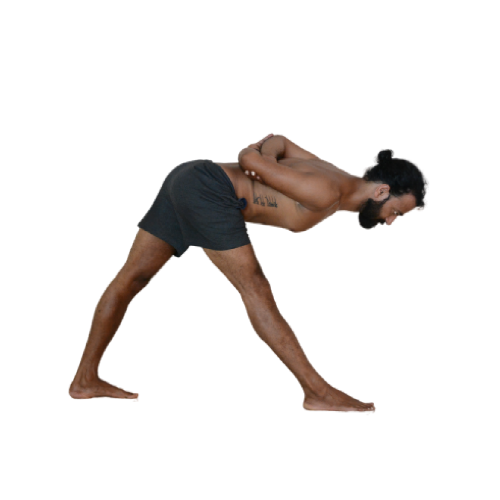
1. From Tadasana step or jump open to the right with your arms open to the side, palms facing down. Your heels should be aligned with the respective hip, one leg-distance apart or less – yet both legs should be extended, your front foot parallel to the longer edge of the mat and your back toes turned in to form a 30 to 45 degree angle with the shorter edge of your mat.
2. Rotate your upper body towards the front and square your hips. Your torso and hips should be parallel to the shorter edge of your mat. Reach out for your opposite elbow behind your back.
3. Inhale, root through your feet, engage your legs, activate your bandhas, hold onto your elbows, lengthen your spine along with the sides of your torso, and lift your chest.
4. Exhale, fold forward with a straight spine until your upper body is parallel to the ground. Look ahead.
what we offer
Explore Our Top Yoga Programs in Kerala
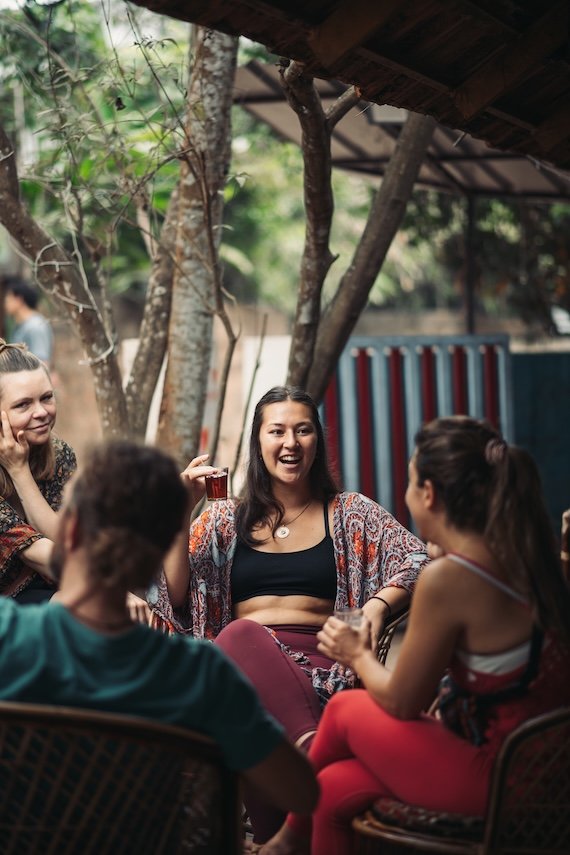
200H Yoga Teacher Training in Kerala
View Program
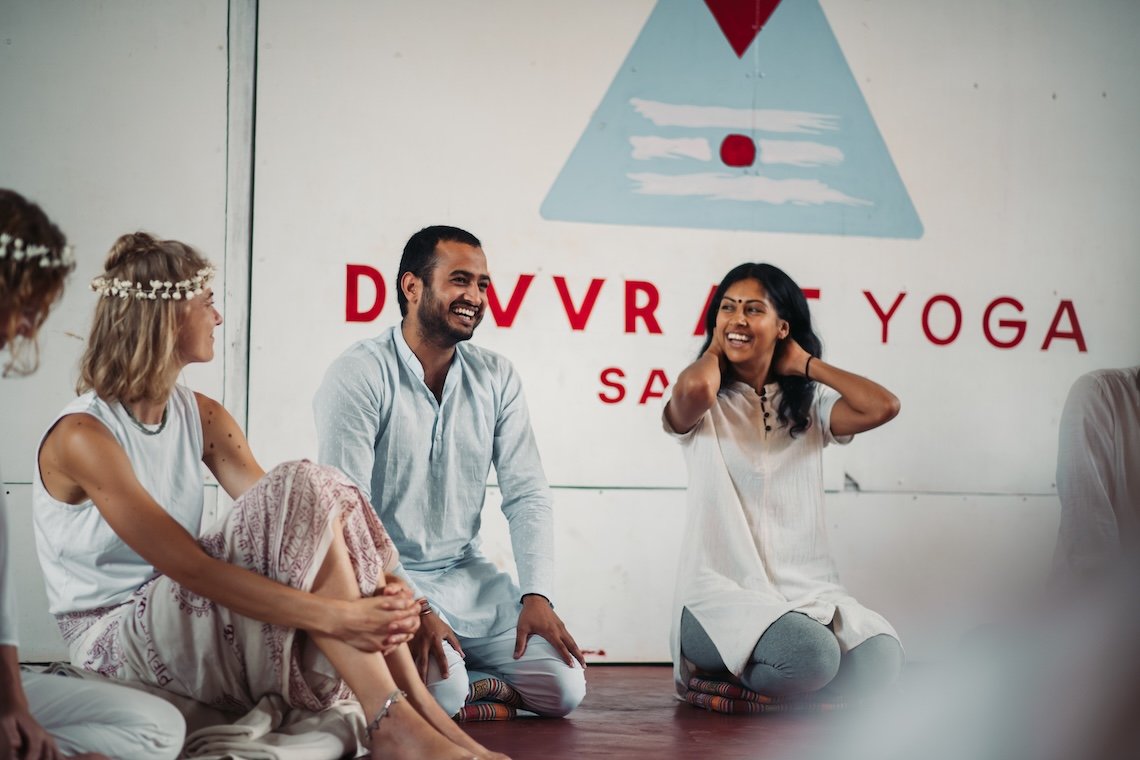
300H Yoga Teacher Training in Kerala
View Program

Yoga & Ayurveda Retreats
Shorter immersive retreats in Kerala combining yoga, Ayurveda, and meditation. Reconnect with yourself while experiencing India’s holistic traditions.
View Program
